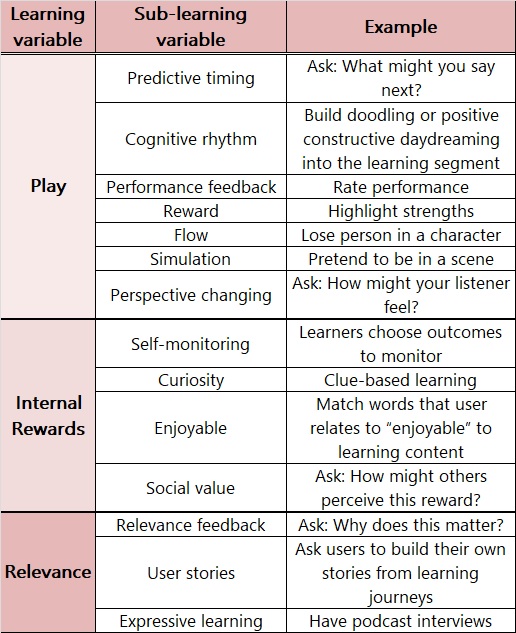Recent research on human psychology and the brain has put the design and development of learning technology at an intriguing crossroads.
Old learning management systems (LMS) already use simpler applications of brain science, such as presenting knowledge in bite-sized chunks so it can be consumed by the brain’s limited-capacity short-term memory cup. In addition, these systems are able to enable repetition, which also helps the brain ensure storage in long-term memory.
But these more superficial principles are only the beginning of brain-based learning. With new technology, we can now match desired learning with how the brain learns best at a much deeper level.
1. Gamification and learning
By lowering stress, the act of play helps the brain feel rewarded and can, therefore, promote it to attend and act more clearly. But you should not automatically make knowledge into a game. This alone will not guarantee success.
Gaming can also provide feedback, reward, and flow states. Each of these elements may enhance learning through technology. Rather than simply providing generic gamification, providing growth and even flow opportunities through virtual reality can add meaningful gaming elements.
2. Internal rewards: It’s not just about kudos
Both rewards help learning, and technology may be designed to measure the impact of each type of reward to help fine-tune learning for any given individual. Sometimes, extrinsic rewards cancel out intrinsic motivation. Learning technology should be built to detect this.
3. Making learning relevant: Implement storytelling
During conditions of heightened uncertainty, the brain requires a level of confidence that shows learning is relevant. To do this, technology must provide some level of feedback, not only on the learning, but also on whether the learning matters. This can be done by helping people be confident that the learning is significant.
Some forms of storytelling have more value than others. For learning to feel relevant it is not just others’ stories that matter. Technology should be designed to document and allow for the story of the user to unfold.
Based on the key ideas expressed above, the following table can help learning designers take the brain into account when designing technology. Use this as a checklist:
The new possibilities for training processes and programs that stem from brain-based learning technology are exciting. By matching how the brain learns to technology that fuels drive, utilizes play, and makes learning relevant, the future of training and onboarding has the potential to be diverse and more impactful. By letting go of old LMS principles and integrating brain-based technology, your HR and talent management team can be one step ahead of competitors.
